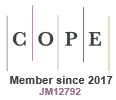Just Accepted
This article has been peer reviewed and accepted for publication. It is in production and has not been edited, so may differ from the final published form.
Analysis of genetic diversity and multi-trait selection utilizing MGIDI and GYT biplot in inter-subspecific cross derivatives of rice
Abstract
Context: Genetic diversity between parental lines is closely linked to the extent of heterosis. Diversifying, indica lines through incorporation of tropical japonica genome has been shown to enhance heterosis in rice. Nevertheless, it is crucial to assess newly developed lines from inter-subspecific crosses for agronomic and quality traits for exploitation. Aim: Assessing the genetic diversity of inter-sub-specific rice derivatives and identifying superior lines with desirable agronomic/quality traits using a multi-trait index. Method: Diversity of 88 breeding lines was estimated via UPGMA clustering for eight agronomic and three quality traits. Multi-trait genotype-ideotype selection indices and yield*trait biplot analysis were used to select superior lines. Key results: The traits total number of spikelets per panicle, gelatinization temperature and apparent amylose content exhibited high genetic variation and heritability, while single plant yield expressed moderate heritability. The lines were grouped into eight distinct clusters, thus harbouring substantial genetic diversity. Significant selection gains for yield and other traits viz., number of spikelets per panicle, productive tillers and apparent amylose content were noticed. Four lines CB_ITJ_123, CB_ITJ_42, CB_ITJ_35, and CB_ITJ_66 emerged as superior candidates for further use in hybrid breeding. Conclusion: The substantial genetic variation and diversity observed in inter-sub-specific derivatives suggest their potential for exploitation in two-line or three-line breeding to enhance the level of heterosis. Implication: Diverse breeding lines developed from Inter-sub-specific hybridization with desirable traits can be used to develop hybrids predicted to be heterotic than intra-specific hybrids. Multi-trait selection indices facilitate the simultaneous improvement of yield attributes and quality traits.
CP24327 Accepted 15 May 2025
© CSIRO 2025



